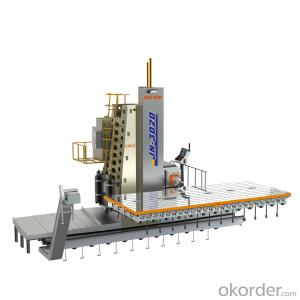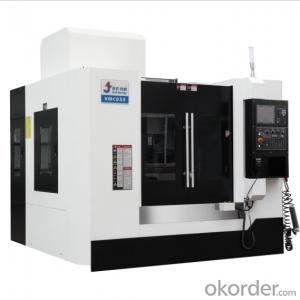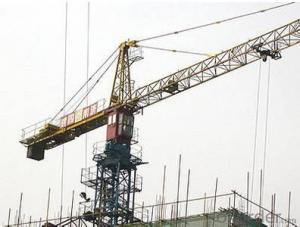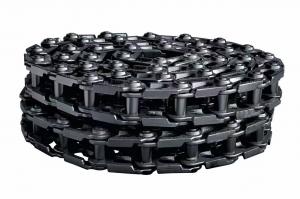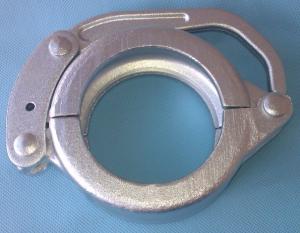Alloy Steel Spread Anchor for Concrete Construction
- Loading Port:
- Tianjin
- Payment Terms:
- TT OR LC
- Min Order Qty:
- 100 pc
- Supply Capability:
- 10000 pc/month
OKorder Service Pledge
OKorder Financial Service
You Might Also Like
Spread anchor for concrete construction
1.Product details:
1) Material: steel
2) Specification: 1.3T, 2.5T (2T), 5.0T (4T), 10.0T (8T)
3) Products available: swift lift lifting eyes are used with the swift lift anchors to lift, handle and place precast concrete elements
2.Primary competitive advantages:
1)We can supply guarantee/warranty
2)On-time delivery time within 25 days after confirming order
3)Products are enhanced by the factory QA and Quality Control checks during the production, if necessary each order can be send out with a certificate referring back to test
4)Precast concrete elements may be lifted several times after casting and during storage and erection-by using this system the designer and the worker manager ensure that each lift is carried out safely and quickly, failure to use a designed and coordinated system could result in material breakage at some point during the production/delivery process
3.Kindly note:
1)All anchors and lifting links must be designed, calculated and installed according to the instruction, details please ask us
2)The system is only suitable for pre-casting, storing and erecting precast elements
3)For long term use, such as counter weights, please consult Halfen
The lifting link must be in a secure position during the lifting operation
4)This literature is guidance for professional engineers/pre-casters, if in doubt, please ask
Market:
Asia
Australasia
Central/South America
Mid East/Africa
North America
Western Europe
FAQ:
Q1: How long about delivery time Concrete transport socket ?
A1: The delivery time will be very short, normally we keep the raw materials for old customers and sometime we also keep stock products to
make sure delivery time in any emergency cases.
Q2: How do we guarantee the quality of our Concrete transport socket ?
A2: We have established an advanced quality management system which conducts strict quality tests at every step, from raw materials to the final product. At the same time, we provide extensive follow-up service assurances as required.
Q3: How soon can we receive the product after purchase?
A3: Within three days of placing an order, we will book the vessel for goods. The specific shipping date is dependent upon international and government factors, but is typically 7 to 30 workdays.

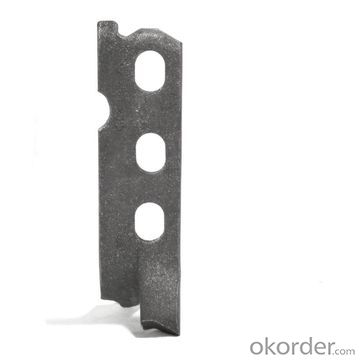
- Q:How do I ensure the reliability of concrete pump spare parts in critical applications?
- To ensure the reliability of concrete pump spare parts in critical applications, there are several steps you can take. 1. Choose reputable suppliers: Purchase spare parts from trusted and reliable suppliers who have a proven track record in the industry. Look for suppliers who specialize in concrete pump spare parts and have a good reputation for quality. 2. Conduct thorough research: Before making a purchase, research the specific spare parts you need and learn about their quality, durability, and performance. Read customer reviews and seek recommendations from industry professionals to ensure you are selecting the most reliable parts for your critical application. 3. Opt for genuine parts: Whenever possible, choose genuine spare parts provided by the original equipment manufacturer (OEM). These parts are specifically designed to fit and function with your concrete pump, ensuring optimal performance and reliability. 4. Regular maintenance and inspections: Implement a regular maintenance schedule and conduct thorough inspections of your concrete pump and its spare parts. This will help identify any potential issues or wear and tear before they become critical problems. 5. Quality control and testing: Before using new spare parts, conduct quality control checks and testing to ensure they meet the required standards. This can involve inspection of materials, dimensional checks, and performance testing to ensure reliability in critical applications. 6. Keep spare parts inventory: Maintain an adequate inventory of essential spare parts to minimize downtime in case of any failures. This will allow for timely replacement and reduce the chances of using substandard or counterfeit parts in critical applications. By following these steps, you can enhance the reliability of concrete pump spare parts in critical applications and minimize the risk of unexpected failures.
- Q:What are the signs of a worn-out concrete pump piston?
- Some signs of a worn-out concrete pump piston may include decreased pumping efficiency, loss of pressure, increased noise or vibrations during operation, inconsistent concrete flow, and visible wear or damage on the piston surface.
- Q:What are the elements of concrete pump and concrete pump truck selection?
- The performance of the random type varies depending on the type and structure of concrete pump truck building, in addition to considering the choice of models into the concrete pouring amount, should also consider the building type and structure, technical requirements, construction site conditions and environment etc.. The main performance parameters of the concrete pump vehicle should be in line with the construction requirements or slightly larger. If the capacity is too large, the utilization rate is low, too small, not only can not meet the requirements, but also will accelerate the loss of the concrete pump truck.
- Q:How can a faulty concrete pump S valve affect the concrete flow?
- A faulty concrete pump S valve can affect the concrete flow by causing disruptions, blockages, or uneven distribution of the concrete. The S valve is responsible for controlling the direction of the concrete flow, and when it malfunctions, it can lead to decreased or inconsistent flow rates. This can result in delays in the construction process, poor concrete quality, or even damage to the pump system.
- Q:How can a faulty oil cooler affect the pump's hydraulic system?
- The pump's hydraulic system can be affected in multiple ways by a defective oil cooler. Firstly, it is the responsibility of the oil cooler to maintain the hydraulic oil at an optimal temperature. If the oil cooler is flawed and fails to cool the oil efficiently, the hydraulic oil may become overheated. This can result in a decrease in the oil's viscosity, causing it to lose its lubricating properties. Consequently, the pump's moving parts may experience heightened friction and wear, leading to reduced efficiency and potential damage to the pump itself. Secondly, a defective oil cooler can lead to inadequate cooling of the hydraulic oil, resulting in elevated temperatures within the system. Elevated temperatures can cause the oil to oxidize, leading to the formation of sludge and varnish deposits. These deposits can obstruct the smooth operation of the hydraulic system, including the pump, valves, and other components, potentially causing malfunctions. Furthermore, a faulty oil cooler can also cause a decrease in the rate of oil flow. If the oil cooler is not functioning properly, it can restrict the flow of hydraulic oil, reducing the amount of oil available for the pump's operation. This can result in decreased hydraulic pressure, affecting the pump's performance and potentially causing issues such as reduced power output or inadequate operation of hydraulic actuators. In summary, a defective oil cooler can have negative effects on the pump's hydraulic system, including overheating, increased friction and wear, the formation of deposits, and a reduced oil flow rate. It is essential to regularly inspect and maintain the oil cooler to ensure proper functioning and prevent potential damage to the hydraulic system.
- Q:How does a concrete pump S valve function?
- A concrete pump S valve functions by controlling the flow of concrete from the hopper to the delivery pipeline. It consists of two flat plates attached to a shaft that can rotate. When the S valve is in the closed position, the plates are pressed together to prevent the concrete from flowing through. As the shaft rotates, the plates separate, allowing the concrete to pass through and be pumped to the desired location. This mechanism ensures efficient and precise control of concrete flow during pumping operations.
- Q:What are the signs of a damaged concrete pump cylinder?
- There are several signs that can indicate a damaged concrete pump cylinder. One of the most obvious signs is leakage of hydraulic fluid from the cylinder. If you notice any fluid dripping or pooling around the cylinder, it could be an indication of a damaged seal or piston. Another sign of a damaged concrete pump cylinder is abnormal noise during operation. If you hear any unusual clanking, grinding, or knocking sounds coming from the pump, it could be a result of a damaged cylinder. This can be caused by a variety of issues such as a bent piston rod, worn out bearings, or misalignment of components. Decreased pumping efficiency is also a common sign of a damaged cylinder. If you notice that the pump is not delivering concrete as effectively as it used to, it could be due to a damaged cylinder. This can result in reduced output, slower pumping speed, or even complete failure to pump concrete. Visual inspection can also help identify signs of a damaged cylinder. Look for any visible cracks, dents, or deformations on the cylinder body. Additionally, check for any signs of excessive wear on the piston or piston rod, such as scratches or grooves. Lastly, if you experience frequent breakdowns or malfunctions with the concrete pump, it could be an indication of a damaged cylinder. Constant repairs or failures can be a result of underlying issues with the cylinder, such as fatigue, corrosion, or improper maintenance. If you notice any of these signs, it is important to address the issue promptly. Continuing to operate a concrete pump with a damaged cylinder can lead to further damage, increased repair costs, and potential safety hazards. It is recommended to consult a professional technician or manufacturer to assess and repair the damaged cylinder.
- Q:What is the function of a concrete pump hydraulic accumulator?
- The function of a concrete pump hydraulic accumulator is to store energy from the hydraulic system and release it when needed, providing a surge of power to the concrete pump. This helps to maintain a consistent and smooth flow of concrete, preventing any disruptions or blockages in the pumping process.
- Q:What is the function of a concrete pump control box?
- The function of a concrete pump control box is to control and regulate the operation of a concrete pump, including starting and stopping the pump, adjusting the flow rate and pressure of the concrete, and monitoring various parameters such as engine speed and hydraulic pressure. It provides a centralized control system for efficient and safe operation of the concrete pump.
- Q:Can a concrete pump pipe be repaired or should it be replaced?
- A concrete pump pipe can typically be repaired rather than replaced, depending on the extent of the damage.
1. Manufacturer Overview |
|
|---|---|
| Location | |
| Year Established | |
| Annual Output Value | |
| Main Markets | |
| Company Certifications | |
2. Manufacturer Certificates |
|
|---|---|
| a) Certification Name | |
| Range | |
| Reference | |
| Validity Period | |
3. Manufacturer Capability |
|
|---|---|
| a)Trade Capacity | |
| Nearest Port | |
| Export Percentage | |
| No.of Employees in Trade Department | |
| Language Spoken: | |
| b)Factory Information | |
| Factory Size: | |
| No. of Production Lines | |
| Contract Manufacturing | |
| Product Price Range | |
Send your message to us
Alloy Steel Spread Anchor for Concrete Construction
- Loading Port:
- Tianjin
- Payment Terms:
- TT OR LC
- Min Order Qty:
- 100 pc
- Supply Capability:
- 10000 pc/month
OKorder Service Pledge
OKorder Financial Service
Similar products
New products
Hot products
Hot Searches
Related keywords


















